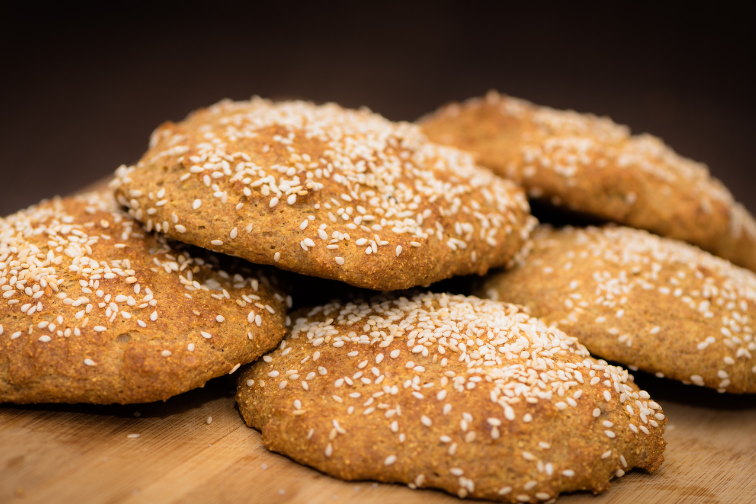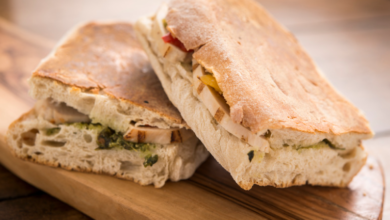Does Ciabatta Bread Contain Gluten?

What To Know
- However, for those with gluten sensitivities or celiac disease, the question of whether ciabatta bread contains gluten is paramount.
- A recognized gluten-free certification, such as the Gluten-Free Certification Organization (GFCO) or the Celiac Support Association (CSA), ensures the product meets strict gluten-free standards.
- Yes, using gluten-free flour blends or commercial gluten-free ciabatta bread mixes, you can make your own gluten-free ciabatta bread.
Ciabatta bread, with its airy texture and crispy crust, is a beloved staple in many kitchens. However, for those with gluten sensitivities or celiac disease, the question of whether ciabatta bread contains gluten is paramount. This blog post delves into the composition of ciabatta bread, exploring its gluten content and providing guidance for informed dietary choices.
Understanding Gluten
Gluten is a protein composite found in wheat, rye, and barley. It provides structure and elasticity to baked goods, contributing to their chewy texture. For individuals with gluten intolerance or celiac disease, consuming gluten can trigger an immune response, leading to digestive issues and other health concerns.
Traditional Ciabatta Bread: A Glutenous Delicacy
Traditional ciabatta bread is crafted using a combination of wheat flour, water, salt, and yeast. Wheat flour, as mentioned earlier, contains gluten. Therefore, traditional ciabatta bread does contain gluten.
Gluten-Free Ciabatta Alternatives
For those seeking a gluten-free alternative to traditional ciabatta, several options are available:
- Gluten-Free Flour Blends: Many gluten-free flour blends, such as those made from almond flour, rice flour, or tapioca flour, can be used to create gluten-free ciabatta-style bread.
- Gluten-Free Bread Mixes: Several commercial gluten-free bread mixes specifically designed for making ciabatta bread are available.
- Commercial Gluten-Free Ciabatta Bread: Some bakeries and grocery stores offer pre-made gluten-free ciabatta bread.
Identifying Gluten-Free Ciabatta Bread
When purchasing or making gluten-free ciabatta bread, it is crucial to verify its gluten-free status. Look for the following indications:
- Gluten-Free Certification: A recognized gluten-free certification, such as the Gluten-Free Certification Organization (GFCO) or the Celiac Support Association (CSA), ensures the product meets strict gluten-free standards.
- Ingredient List: Carefully examine the ingredient list to ensure that all ingredients are gluten-free. Avoid products containing wheat, rye, or barley.
Benefits of Gluten-Free Ciabatta Bread
For those who must adhere to a gluten-free diet, gluten-free ciabatta bread offers several benefits:
- Enjoyable Bread: Gluten-free ciabatta bread provides a satisfying bread experience with its light and airy texture.
- Dietary Inclusion: It allows individuals with gluten intolerance to enjoy a versatile bread that can be incorporated into various meals.
- Improved Health: Eliminating gluten from the diet can alleviate digestive issues and other health concerns associated with gluten intolerance.
Conclusion: Navigating Gluten in Ciabatta Bread
Understanding the gluten content of ciabatta bread is essential for making informed dietary choices. Traditional ciabatta bread contains gluten, while gluten-free alternatives are available for those with gluten intolerance or celiac disease. By verifying the gluten-free status of ciabatta bread before consuming it, individuals can enjoy this beloved bread without compromising their health.
What You Need to Learn
1. What are the symptoms of gluten intolerance?
Symptoms can include digestive issues such as bloating, gas, diarrhea, and abdominal pain, as well as fatigue, headaches, and skin rashes.
2. Is all ciabatta bread gluten-free?
No, traditional ciabatta bread contains gluten. However, gluten-free alternatives using gluten-free flour blends or commercial mixes are available.
3. How can I identify gluten-free ciabatta bread?
Look for gluten-free certification or carefully examine the ingredient list to ensure it contains no wheat, rye, or barley.
4. What are some gluten-free flour alternatives for making ciabatta bread?
Almond flour, rice flour, tapioca flour, and gluten-free flour blends can be used.
5. Can I make my own gluten-free ciabatta bread?
Yes, using gluten-free flour blends or commercial gluten-free ciabatta bread mixes, you can make your own gluten-free ciabatta bread.




